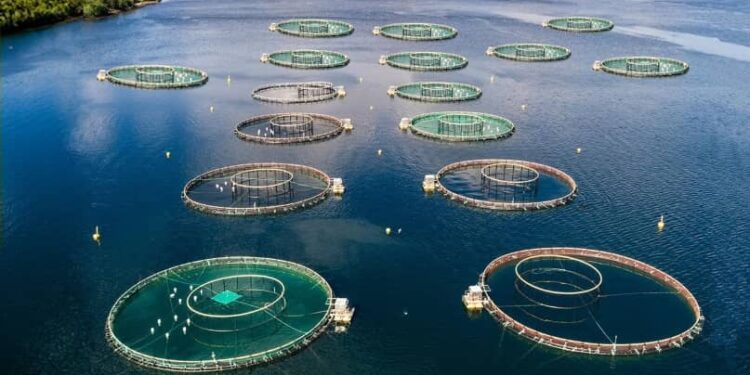With its vast coastline stretching along the Atlantic and Pacific Oceans, South America is blessed with abundant marine resources. The fishing industry in South America has played a vital role in the region’s economy, culture, and food security for centuries. The diverse ecosystems and favorable oceanic conditions have made South America a prime location for seafood production. In this article, we will explore the thriving fishing industry in South America, delving into its rich resources, sustainable practices, and economic significance.
Abundant Resources and Sustainable Practices
- Rich Marine Resources
South America’s fishing industry benefits from an extensive range of marine resources, offering diverse fish and seafood. The Atlantic coast is known for species like anchovies, hake, sardines, and tuna. On the Pacific coast, Chile and Peru boast an abundance of anchovies, mackerel, and squid. The Amazon River basin and its tributaries provide access to an array of freshwater fish, while the Galapagos Islands are home to unique marine species found nowhere else on Earth.
- Economic Significance
The fishing industry is a significant contributor to the economies of South American countries. It provides employment and livelihoods for millions, from small-scale artisanal fishers to sizeable commercial fishing operations. Seafood exports are crucial in generating foreign exchange earnings for countries like Chile, Peru, and Ecuador. Additionally, the fishing sector supports related industries, such as processing, packaging, and transportation, creating a multiplier effect on the economy.
- Sustainable Practices
With increasing concerns about overfishing and environmental impact, several South American countries have embraced sustainable fishing practices. Governments and fishing communities have implemented strict regulations to protect marine ecosystems and ensure the long-term viability of fish stocks. Measures such as catch limits, fishing quotas, and closed seasons aim to prevent overexploitation and allow fish populations to replenish.
- Aquaculture Growth
Aquaculture, the farming of fish and other aquatic organisms has seen significant growth in South America. Countries like Chile have become global leaders in salmon farming, exporting high-quality salmon to markets worldwide. Aquaculture supplements wild catch and reduces pressure on wild fish stocks, supporting sustainable seafood production.
- Challenges and Conservation Efforts
Despite the region’s rich marine resources, the fishing industry in South America faces several challenges. Overfishing and illegal fishing remain persistent problems threatening fish populations and marine ecosystems. The sector also faces environmental challenges such as pollution, habitat destruction, and the impacts of climate change. Conservation efforts, led by NGOs, governments, and local communities, aim to address these challenges and promote responsible fishing practices.
- Regional Cooperation
The fishing industry in South America is closely interconnected, with many countries sharing fish stocks that migrate across regional boundaries. Effective management of shared fishery resources requires collaboration and cooperation among nations. Regional organizations, such as the South Pacific Regional Fisheries Management Organization and the South Atlantic Fisheries Organization, work towards sustainable management of shared fishery resources.
- Social and Cultural Significance
Fishing has deep-rooted cultural significance in many South American coastal communities. Traditional fishing practices passed down through generations are often intertwined with local customs, rituals, and celebrations. Fish and seafood are staples of the regional cuisine, reflecting each country’s unique flavors and culinary traditions.
- Seafood Exports and Markets
South America is a significant player in the global seafood market, exporting various products to countries worldwide. Fish and seafood products, including shrimp, squid, and canned fish, find their way to international markets, contributing significantly to the economies of exporting countries.
- Challenges in Illegal, Unreported, and Unregulated (IUU) Fishing
Illegal, unreported, and unregulated (IUU) fishing poses a significant threat to the sustainability of the fishing industry in South America. IUU fishing depletes fish stocks and undermines efforts to manage fisheries responsibly. Governments and organizations work together to combat IUU fishing through improved surveillance, stricter regulations, and increased offender penalties.
- Future Prospects
The fishing industry in South America continues to evolve, facing both opportunities and challenges. By embracing sustainable practices, promoting responsible management, and investing in aquaculture, the region can ensure a prosperous and sustainable fishing industry for generations.
Seafood production in South America is an integral part of the region’s economy and culture. South America has become a significant player in the global fishing industry with its vast coastline and rich marine resources. Seafood production in South America involves diverse species, and the region’s sustainable practices ensure the long-term viability of fish stocks. The fishing industry in South America relies on the responsible management of shared resources and regional cooperation to combat challenges like overfishing and illegal practices. Emphasizing sustainable seafood production in South America is essential for preserving the marine ecosystem and securing the livelihoods of millions of people dependent on this thriving industry.
The fishing industry in South America is a vital component of the region’s cultural heritage, economy, and food security. Rich marine resources, sustainable practices, and regional cooperation have enabled the industry to thrive — challenges like overfishing and IUU fishing demand concerted efforts to preserve marine ecosystems and fish populations. Through responsible management and a commitment to sustainability, South America’s fishing industry can continue providing a bountiful seafood supply, benefiting both local communities and the global market.












Discussion about this post